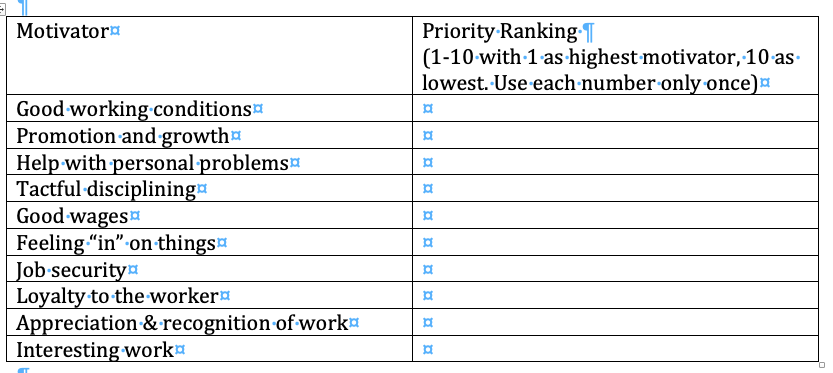Here’s why you should bring your Q & A to the BSC Lean® Forum™ Thursday, August 7 @ 11am Central online.
Fall is here and we’re getting close to 2026 but there’s still time to plan & adjust!
GET ANSWERS TO YOUR OWN QUESTIONS & SHARE YOUR OWN EXPERTISE!
Learn and practice good Lean® Management techniques with guidance from our Lean® Forum founder, leader and expert, Dave Nave, Dave Nave & Associates. (He will give a short tutorial at the beginning of the Forum to get us started). Mr. Nave is a member of The Deming Institute’s Advisory Council & a graduate of the Deming Scholars MBA program at Fordham University
See you online, Thursday 8/7 @ 11am-Noon Central
Seating Limited • Be sure to RSVP today and get the recording even if you can’t attend.
We start at 11am and end right at noon Central because your time is valuable.
____________MENTORING FORUM REMINDER________________
An interview with Patricia Rogers, Research Director, Austin Business Journal.
Topic: “What you need to know: PR Today and How It’s Different”
Mark Your Calendar: BSC Mentoring Forum™, September 4, 11am Central led by Jan Triplett, CEO, Business Success Center
ONLINE • FREE • RSVP (Thursday, 9/4/25, @ 11am Central online)
Upgrading Your Providers for your benefit and theirs — BSC Wisdom Webinar recording
The February BSC Wisdom Webinar and Work Session focused on Providers — how to choose, evaluate, and manage them better for both of you. Attendees added some great ideas from their own experiences. Check it out here: https://bit.ly/WisdomWebinar-UpgradeProviders-2-17-22.
Networking 2022: Trends and Tips
If you weren’t able to attend this BSC Wisdom webinar, you missed a great discussion and work session led by Jan Triplett, Austin’s Mother of Networking and author of The Networker’s Guide to Success and co-author Thinking Big, Staying Small with input and examples from attendees.
Here’s what this webinar/work session was all about:
• What’s the difference between Networking, Mentoring, and Prospecting?
• Your three types of networks and how to improve them in 2022
• Making better quality choices of how, where and with whom to network
• New networking roles and responsibilities
• When and how to say “No” plus “red flag” warnings
• Why your networking efforts don’t pay off
Here’s a link to the recording and transcript. https://bit.ly/WisdomWebinar-Networking-1-20-22
101+ Ways to “fund” your business
PPP and EIDL are options to get things done in your business but there are plenty more if you look further than those related to debt or equity. These slides from a presentation to a local chamber of commerce will give you some ideas of what is out there. If you find more, let me know!
http://ownersview.com/wp-content/uploads/101-Ways-to-Fund-Texas-HUB-Expo-2019.pdf
10 ways to give employees what they want

Even the biggest “carrot” can’t necessarily motivate staff. You need to find out what will. This picture is of the historical site of the Carrot Campaign, Port Hardy, British Colombia. Canada. It’s a symbol of government road building promises dangled in front of islanders since 1897 according to Wikipedia. (Photo by Diesel Demon http://www.flickr.com/photos/28096801@N05/3933107980/sizes/m/)
Do you know what motivates your employees?
Your employees should be grateful for their jobs, right? Satisfied? Motivated? But, they seem hesitant. It’s as if they’ve just put their heads down and are trying to bull their way through each day. How can you lead them if they aren’t motivated? You can’t.
What’s your Employee Leadership IQ? IQ as used here stands for Information Quotient. How’s yours when it comes to understanding and working with your staff? Leaders lead people; managers manage things. If you’re going to have a successful business, you have to lead successfully. To lead successfully, you want to hear and understand their priorities and motivators.
There are plenty of studies about understanding motivation. One of the most basic is the Ohio State University scholarly study (https://archives.joe.org/joe/1998june/rb3.php), a version of which I have used for years with everyone from police departments, to government employees, to small businesses. This 2020 blog from Smarp, the Top 15 employee motivation tips, has an excellent infographic that is worth studying. Jeff Miller’s 2017 article in Inc., 3 Important things you need to know about motivation, is more manager-focused than employee-focused but can be useful. The most useful research is to do your own. Keep reading for my recommendation.
However, it really comes down to really hearing what your employees have to say and responding to their needs and desires. One motivator doesn’t usually cover everyone because everyone is unique. There is one truth about motivated people, they motivate others. They motivate people to stay with you and new people to work for you.
Doubt this uniqueness? Want to measure your Leadership IQ? Here’s a simple and quick little experiment using the Employee Priority Motivator Tool™.
EMPLOYEE PRIORITY MOTIVATOR TOOL™

This list originally came from an informal class, Understanding and Working with People, offered at the The University of Texas at Austin but its origins go back even further to a study by James R. Lindner (https://archives.joe.org/joe/1998june/rb3.php). You may want to add to the list based on ideas from your employees, team leaders, or managers. I recommend you at least keep these 10.
Instructions.
- Using the tool above, rank each item from 1— 10 in terms of what you think are the motivating priorities of each employee.
- Then ask supervisors or managers to do the same thing.
- Finally ask each employee to rank the list for themselves. You can also ask them to rank the list for teammates.
- Now, compare what you thought, what supervisors thought, and what employees said about themselves and others.
There’s almost always a huge disconnect. When we have asked clients to do this, the owners, managers, and team leaders seem sure they know beforehand what motivates their employees. They are almost always surprised with what people say. Even in tough economic times, the employee motivator is not what they or you might expect.
If there isn’t a big difference in your results, congratulations! You’re on course to understanding and motivating your people. This will make leadership a lot easier. We are motivated by what will get us what we want (or value) within our unique timeline.
To get or keep employees motivated, keep checking. You also want to make sure they get what they need or show them that there’s real progress being made in that direction.
My final thought is: no matter what, take some action to find out what you need to do to motivate people. Don’t just jump in and hope you’ve got your employee motivation right. That’s a great way to waste a lot of money and effort.
6 Ways to Improve Your Sales Projections

Measure sales carefully to be profitable.
Your sales projection formula is key to more accurate financial projections and to the success of your business.
Sales projection formulas are always wrong. Here are six ways to improve them.
Sales projections are wrong because…
- Sales projections are not supposed to be right. They need to be relevant.
They’re a snapshot. They are a specific point in time, based on relevant data and criteria and are defensible within limits. They give you an idea of what to expect each week or month or year. Improve your sales projections by making sure you don’t accept the projected sales numbers without question — including your own numbers. The answers you get from salespeople in terms of what they think will close have to be reasonable and with some sort of basis not just hype and hope. [Read more…]
4 Parts to a Platinum Customer Profile System™
There are 7 potential customer types you could have — Platinum, Gold, Silver, Bronze, Lead, Concrete, and RAW (Radio Active Waste). But you should have only the best, the Platinum Customer. They give you money and a lot more.
If you aren’t satisfied with the value of your current customers, make better choices by setting up a Platinum Customer Profile™ identification system. This is more than just “target” or “niche” marketing. The four parts of a Platinum Customer Profile™ are demographics, psychographics, behaviors, and geography. [Read more…]
What’s the best customer attitude & point of view for your business success?

Use the right customer attitude and point of view to stay on the right road to success.
Image by maxmihal from IStock Photo.
Your customer’s attitude is your guide to how you sell and how you market. It also helps you make decisions about adding to or changing the services and products you offer. Attitude is not all about a customer’s wants, desires or needs. It is about their point of view (POV)— at least as it relates to what you have to offer them. The good news is you can choose what is the best customer attitude and POV for your business success from three options. Then you can focus on attracting customers who have the right attitude match. This will make your business a lot better for everyone.
Leveraging Existing Customers in Contract Negotiations

Rabbit vs. penguin. Who do you think would win in a negotiation? Image by Daniel Voyager3.
Contract negotiations and re-negotiations can be risky business. Both parties go into it with the assumption of the potential for conflict. If you are the provider, you do have a secret weapon: your existing customers and their contracts.
These existing contracts give you precedent that you can use in the negotiations. This is especially true if you do business with a government entity. As my colleague Sandra Stenzel, founder of the Bid Resource Centers in Texas that became the model throughout the US has often said to clients, “the government wants the lowest responsive, responsible bid”. That translates in contract negotation to “we want the best deal” — unspoken is “than you give anyone else”.
In our case, our client was faced with a customer who wanted the same terms as the government got and not an increase in price from the last contract. Reasonable, but not in line with the contracts of their other clients. Our client’s goal was to provide parity with his other non-government contracts for the same work. Also reasonable and necessary for his growth in order to simplify his pricing structure which was definitely not standardized. [Read more…]
What a CFO Can Do to Improve the Sales System

Role-playing dice have nothing on the role-playing CFO when it comes to improving the sales system.Photo by cal-harding from flickr.
What can a CFO do to improve the company’s sales system? What do they even know about sales? You’d be surprised.
If you’re the CFO and CEO, the following applies to you. If you’re both of these plus the Director of Sales and maybe even the Chief Salesperson, you still need to include the tasks below in order to improve the results of your sales system. [Read more…]
